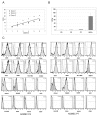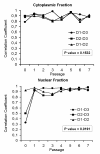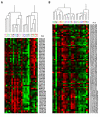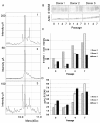Changes in the proteomic profile of adipose tissue-derived mesenchymal stem cells during passages
- PMID: 22828447
- PMCID: PMC3499380
- DOI: 10.1186/1477-5956-10-46
Changes in the proteomic profile of adipose tissue-derived mesenchymal stem cells during passages
Abstract
Background: Human mesenchymal stem cells (hMSC) have recently raised the attention because of their therapeutic potential in the novel context of regenerative medicine. However, the safety of these new and promising cellular products should be carefully defined before they can be used in the clinical setting, as. The protein expression profile of these cells might reveal potential hazards associated with senescence and tumoral transformation which may occur during culture. Proteomic is a valuable tool for hMSC characterization and identification of possible changes during expansion.
Results: We used Surface Enhanced Laser Desorption/Ionization-Time Of Flight-Mass Spectrometry (SELDI-ToF-MS) to evaluate the presence of stable molecular markers in adipose tissue-derived mesenchymal stem cells (AD-MSC) produced under conditions of good manufacturing practices (GMP). Proteomic patterns of cells prepared were consistent, with 4 up-regulated peaks (mass-to-charge ratio (m/z) 8950, 10087, 10345, and 13058) through subculture steps (P0-P7) with similar trend in three donors. Among the differentially expressed proteins found in the cytoplasmic and nuclear fractions, a cytoplasmic 10.1 kDa protein was upregulated during culture passages and was identified as S100A6 (Calcyclin).
Conclusions: This study suggests for the first time that common variation could occur in AD-MSC from different donors, with the identification of S100A6, a protein prevalently related to cell proliferation and cell culture condition. These results support the hypothesis of common proteomic changes during MSCs expansion and could give important insight in the knowledge of molecular mechanisms intervening during MSC expansion.
Figures






References
-
- Digirolamo CM, Stokes D, Colter D, Phinney DG, Class R, Prockop DJ. Propagation and senescence of human marrow stromal cells in culture: a simple colony-forming assay identifies samples with the greatest potential to propagate and differentiate. Br J Haematol. 1999;107:275–281. doi: 10.1046/j.1365-2141.1999.01715.x. - DOI - PubMed
LinkOut - more resources
Full Text Sources
Research Materials

